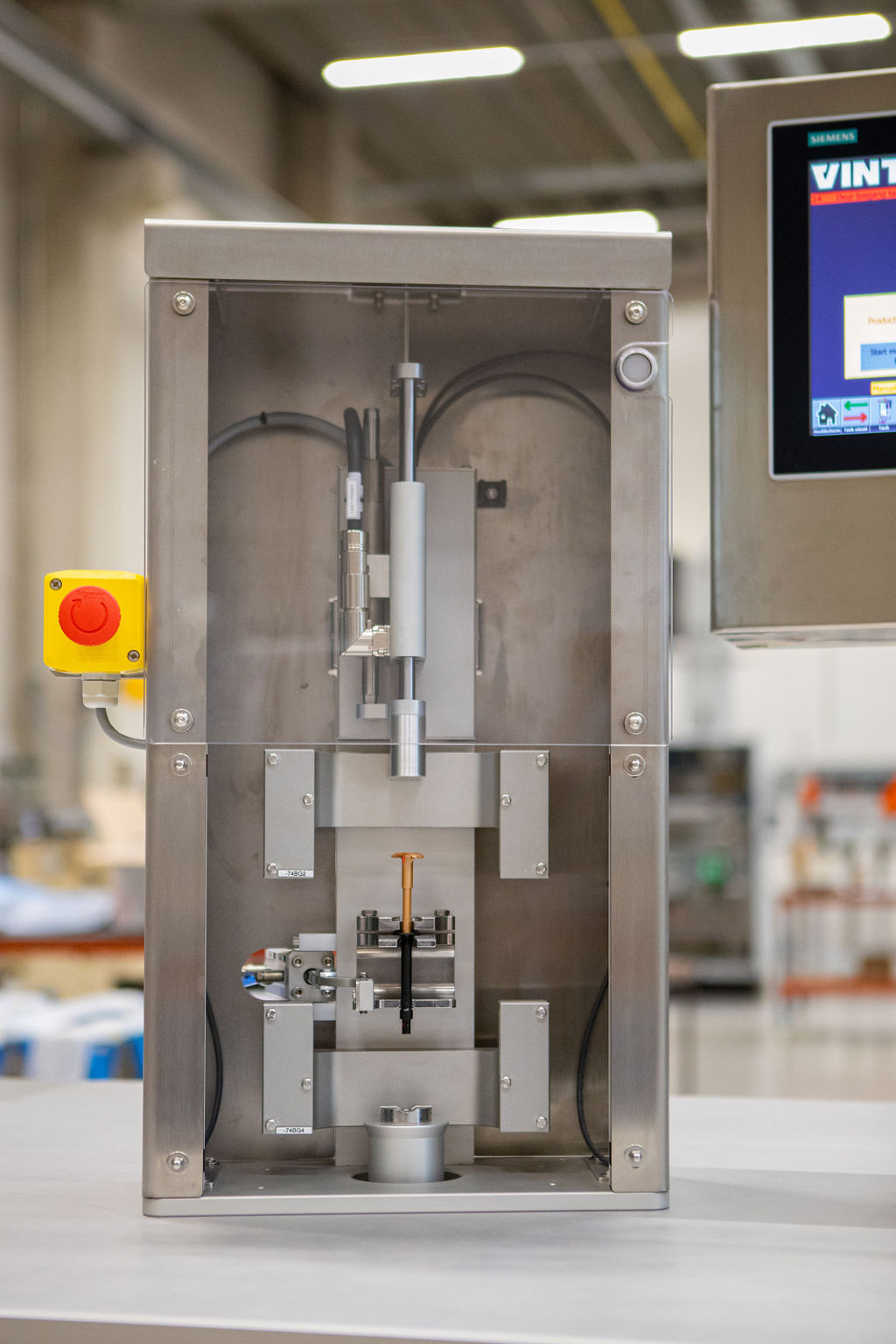Syringe filling machine for dental restorative composite
Challenge
Engineer and build a semi-automatic syringe filling and closing machine. The syringes are to be filled with a dental restorative composite.
Dental restorative composite is a challenging material to handle. Even more so when it’s put under pressure, with the goal of being dispensed. It’s a highly viscous composite paste, containing small, hard particles.
We had to exclude every possible risk of air getting into the syringes during the filling and capping process. Air bubbles compromise accurate dosage delivery, affect product efficacy and cause patient discomfort.
All product contact materials had to be resistant to ultrasonic cleaning with chemicals. The buffer tank containing the restorative composite had to be easy to clean by hand or in an ultrasonic bath.
The syringes are to be assembled and fed to the machine by an operator.
Solution
We started out by building a proof of concept to get the pumping technology and buffer tank right.
Custom pump for syringe filling machine
Standard pumping solutions did not suffice. The composite proved too tough to handle during the POC, causing blockages. The valves and seals also wore out at a rapid pace and the cleanability left much to be desired.
The same was true for the drum holding the dental restorative composite: standard buffer tanks did not comply with our client’s cleaning processes.
We designed and built a custom pump and drum for this syringe filling machine. Both can be easily dismantled by the operator through quick release mechanisms.
Vacuum filling
The syringes are preassembled and put into the machine by an operator. By integrating positioning guides, syringe grippers position feedback and an additional control system, we exclude human errors. A safety light curtain ensures operators safety.
The syringes are then docked into the filling station. Any possible air inside the syringes is extracted.
The pump transfers the paste to a nozzle, positioned at the bottom of the syringe. This nozzle fills up the syringe until a certain setpoint is reached. A vacuum pump and valve system guarantee bubble-free filling.
Next, the operator takes out the filled syringes and feeds them to the other part of the machine, together with the caps.
Syringe capping
This station closes the filled syringe. The capping is carried out with torque and angular control.
The plunger is pushed down until the paste reaches the tip of the syringe. A fiber sensor checks if this step is performed properly.
Clamping keeps the syringes in place, not allowing them to move or rotate during the pushing and capping process.
Results
A semi-automatic syringe filling machine that improves patient’s well-being and overall product quality.
- Perfect dosage
- Vacuum filling and closing
- Easy to operate and clean
- Built-in quality checks
Contact us
Trust us with you project.
Magazine
Get to know us. Download our magazine.




